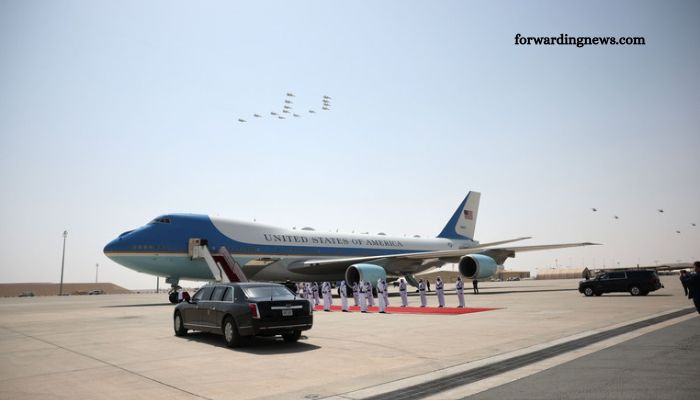The royal family of Qatar, owners of one of the world’s largest private jet fleets, has quietly begun shedding some of its most extravagant aircraft. Among these is a Boeing 747 jumbo jet, which may soon find an unlikely new owner in former President Donald Trump. While speculation has surrounded Qatar’s motives, the reality appears to be more straightforward: the royals simply no longer want the plane.
Read More: 5 Common SAT Myths Every Student Needs to Know
Qatar’s Changing Aircraft Strategy: Moving Away from the Jumbo Jet Era
Qatar’s royal fleet, including roughly a dozen luxury Airbus and Boeing jets, once epitomized opulence in the skies. But the massive 747-8 — with its four engines and customized interiors — no longer fits Qatar’s evolving needs.
Aviation experts explain that modern states, including Qatar, are shifting toward smaller, more efficient, and discreet aircraft. “Qatar is moving toward leaner, more versatile planes that offer better economics and a lower profile for official travel,” says Linus Bauer, managing director of aviation consultancy BAA & Partners.
The 747s, with their high operating costs and visibility, have become increasingly obsolete, both financially and strategically.
The Boeing 747-8: A Flying Palace Past Its Prime
The 747 revolutionized air travel when it debuted in 1970, but today its four engines make it costly to operate — around $23,000 an hour for the VIP versions. Qatar’s 747-8 jets were among the most lavish, with interiors designed over three years featuring bedrooms, entertainment lounges, and luxury furnishings by Parisian design house Cabinet Pinto.
Yet, despite the grandeur, the plane’s operational limitations and fuel inefficiency have driven many governments and royal families—including those in Saudi Arabia, the UAE, and Germany—to retire their 747 fleets.
The Market Reality: An Illiquid and Expensive Asset
The market for selling such bespoke jets is notoriously illiquid. Qatar’s 747, which has flown just over 1,000 hours in the past five years, has struggled to find buyers since being listed for sale in 2020. Experts say converting these planes for other uses, such as cargo, is prohibitively expensive and complicated due to their customized interiors and structural design.
Richard Aboulafia, aerospace consultant with Aerodynamic Advisory, points out the security concerns too: “These big planes are big targets and require longer runways, limiting where they can operate.”
Maintenance Costs: A Burden for the Royals
Maintaining a 747 is a costly endeavor. The Qatar 747 requires expensive overhauls and routine checks every few years, with some costing millions and taking months. John Goglia, former airline mechanic and NTSB member, notes that as the global 747 fleet shrinks, so does the pool of qualified mechanics, further driving up costs.
Giving away the plane could save Qatar millions, making a gift to Trump an attractive option—especially as a diplomatic gesture.
Trump’s Interest and the Challenges Ahead
Former President Trump has publicly expressed enthusiasm for acquiring Qatar’s 747, claiming it would save American taxpayers hundreds of millions. However, experts caution that the plane would need extensive modifications to meet Air Force One’s stringent security and communication standards.
Upgrading the jet into a secure airborne command center would likely take at least five years and cost tens of millions more, potentially negating any savings.
Geopolitical and Financial Context
Qatar’s willingness to offer the plane fits a broader pattern of cultivating U.S. ties through financial investments and diplomatic gifts. Qatar hosts a major U.S. military base, supports American universities, and maintains business connections with the Trump family.
For Qatar, parting with one 747 is no loss given their extensive fleet and access to Qatar Airways’ executive jets. As business aviation consultant Brian Foley observes, “I don’t think they’ll miss it.”
Frequently Asked Questions
Why is Qatar getting rid of its Boeing 747 jumbo jets?
Qatar is moving away from large, fuel-inefficient aircraft like the 747 in favor of smaller, more economical, and discreet planes that better suit modern diplomatic and official travel needs.
What makes the Qatar 747 unique compared to regular 747s?
The Qatar 747-8 is a highly customized VIP jet designed for just 89 passengers, featuring luxurious interiors with bedrooms, meeting rooms, and high-end materials designed over three years.
Why hasn’t Qatar been able to sell the plane?
The market for such highly customized jumbo jets is very limited. Potential buyers are few because of the plane’s high maintenance costs, fuel inefficiency, and specialized interiors that are difficult and expensive to convert.
What are the maintenance challenges associated with the 747?
Maintenance is costly and complex, including expensive overhauls and long downtime. The shrinking 747 fleet worldwide also means fewer specialized mechanics are available, increasing maintenance costs.
Why might Qatar consider gifting the plane to Trump?
Giving away the plane would save Qatar money on upkeep, and gifting it to a high-profile figure like Trump could be a strategic diplomatic gesture.
Would the 747 be ready for use as Air Force One?
No. The plane would need extensive retrofitting to meet Air Force One’s security and communication requirements, which could take years and cost tens of millions of dollars.
How does this move fit into Qatar’s broader geopolitical strategy?
Qatar frequently uses financial investments, donations, and diplomatic gifts to strengthen ties with the U.S. and other allies, supporting military bases and business relationships.
Conclusion
Qatar’s decision to offload its Boeing 747 is less about courting favor and more about pragmatic fleet management amid changing economic and strategic realities. While the plane’s potential transfer to Trump is headline-worthy, it underscores the twilight of an era for massive, luxurious jumbo jets and the rise of leaner, smarter aviation for states and their leaders.

